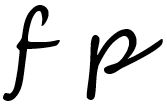We have seen, or described, three details on Maftei shoes, namely wood pegging construction, seamless wholecut and seamless heel. Seamless wholecut has certainly seamless heel, but all his models have seamless heel. A seamless heel can create a cleaner and more refined finish, and its difficulty lies on lasting.
I will Introduce the other two today.
Fully blind stitching
In fact, this has also been seen on Kafka, a side laced seamless wholecut.
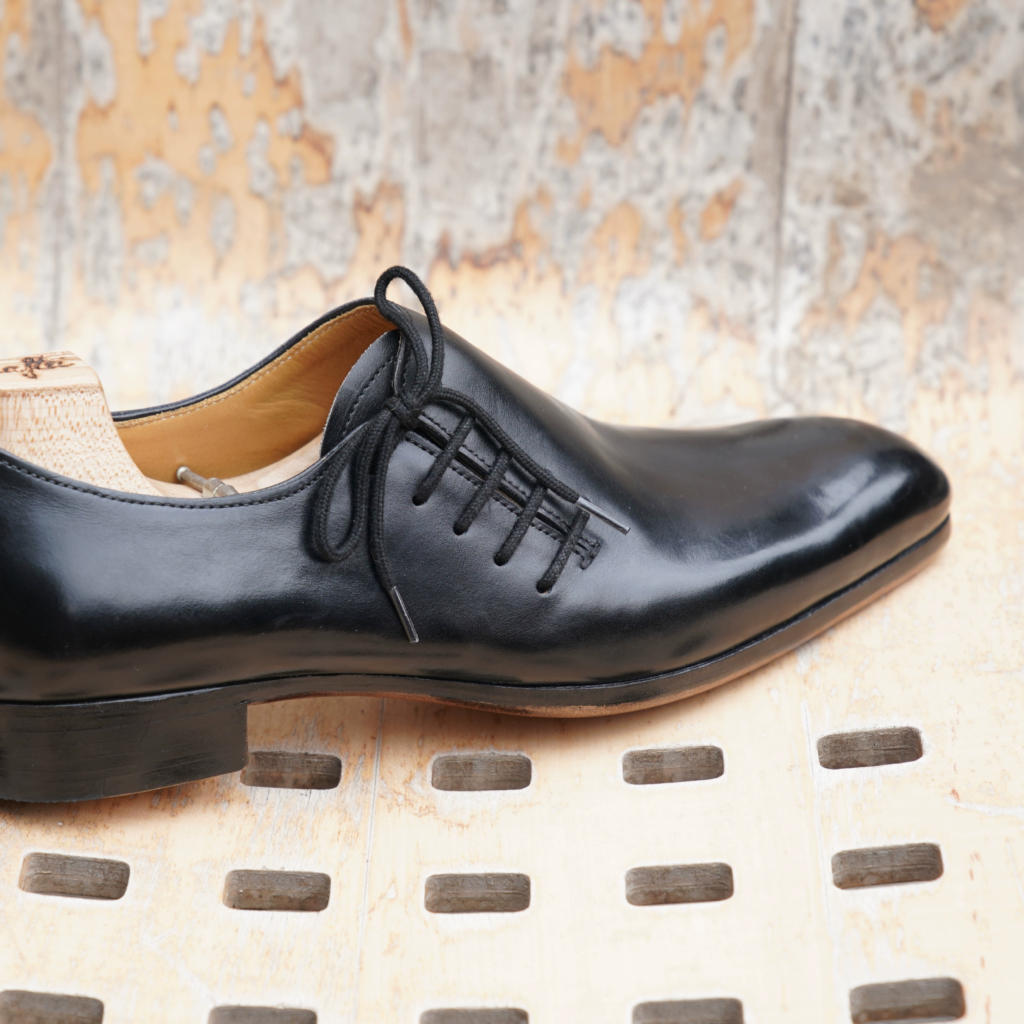
I’ll take a closer look today, because I still haven’t figured out how to do it.
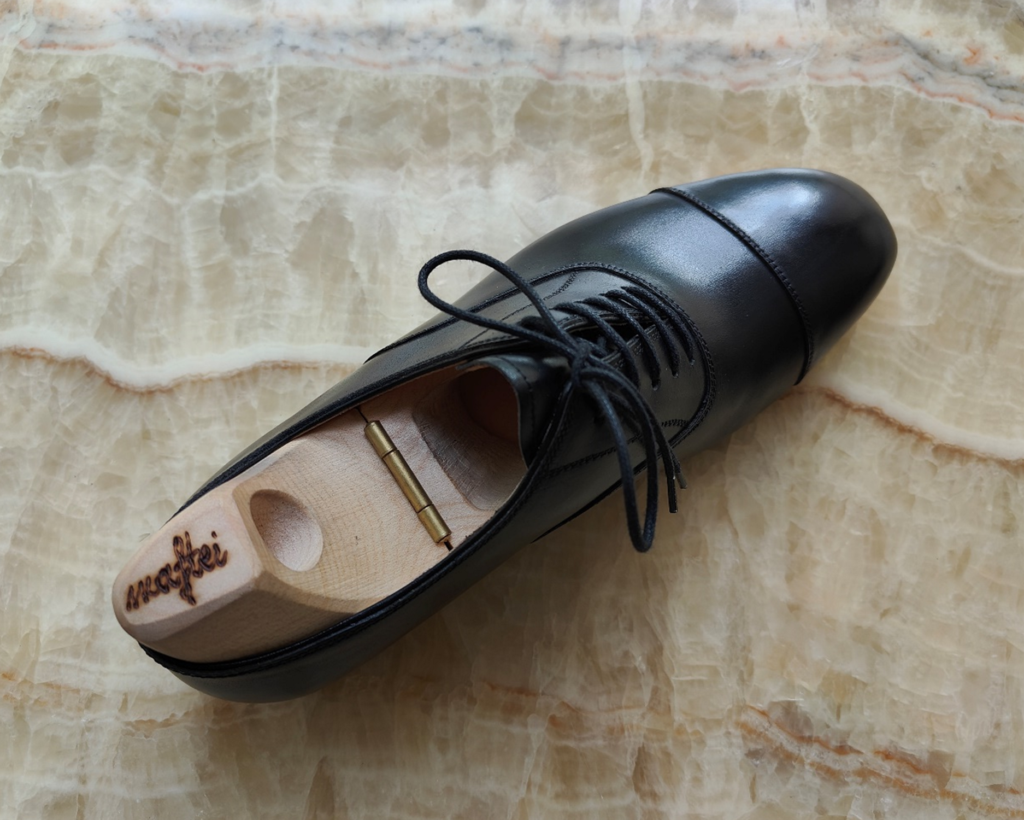
Take this pair of Schubert sitting on Pei last (Austrian-Hungarian towering square round toe) as an example.
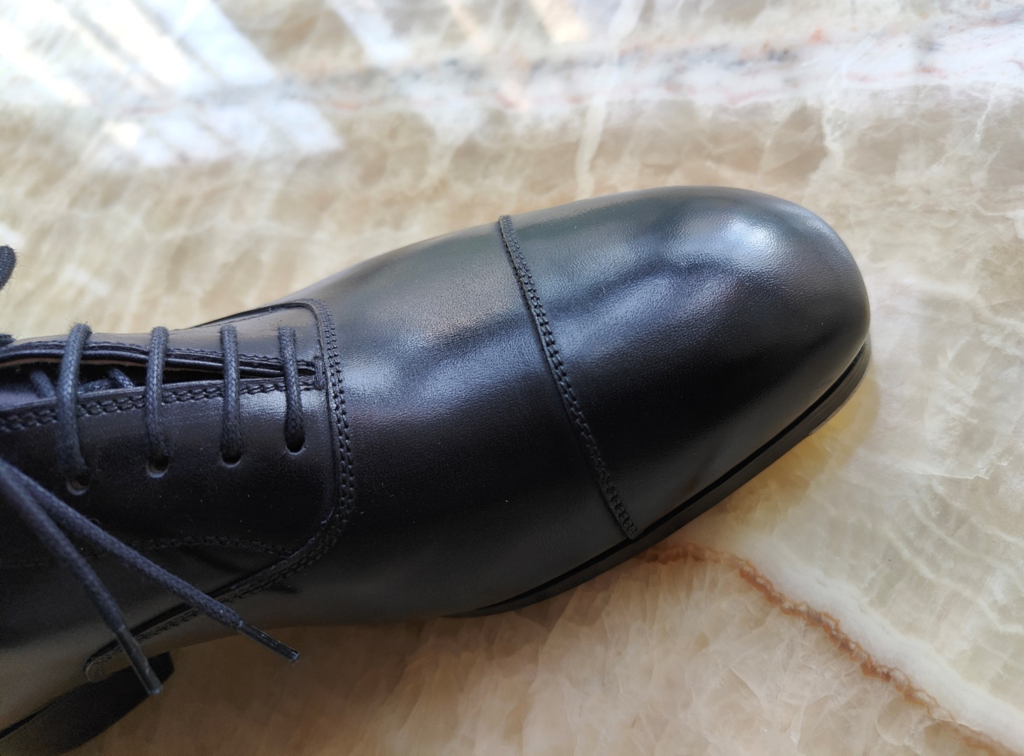
The sole is even narrower than the upper.
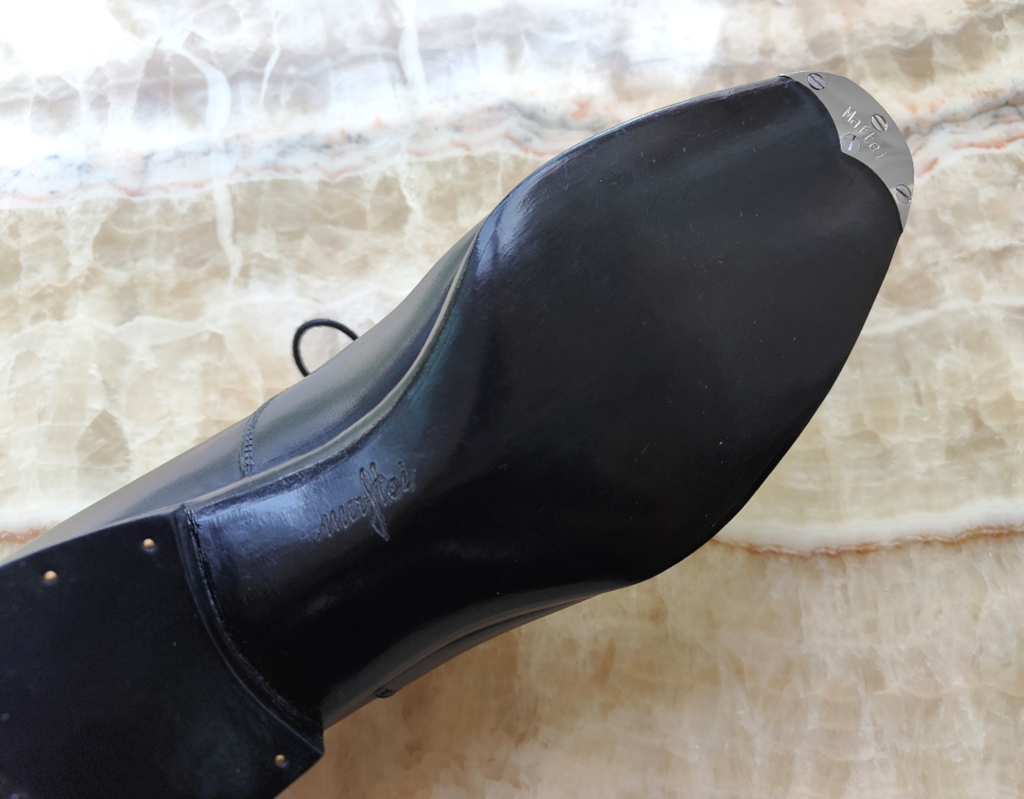
First look at the sole as a whole, London waist, the whole is blackened, the logo is on the side of the rounded waist, and the toe plate has a logo.
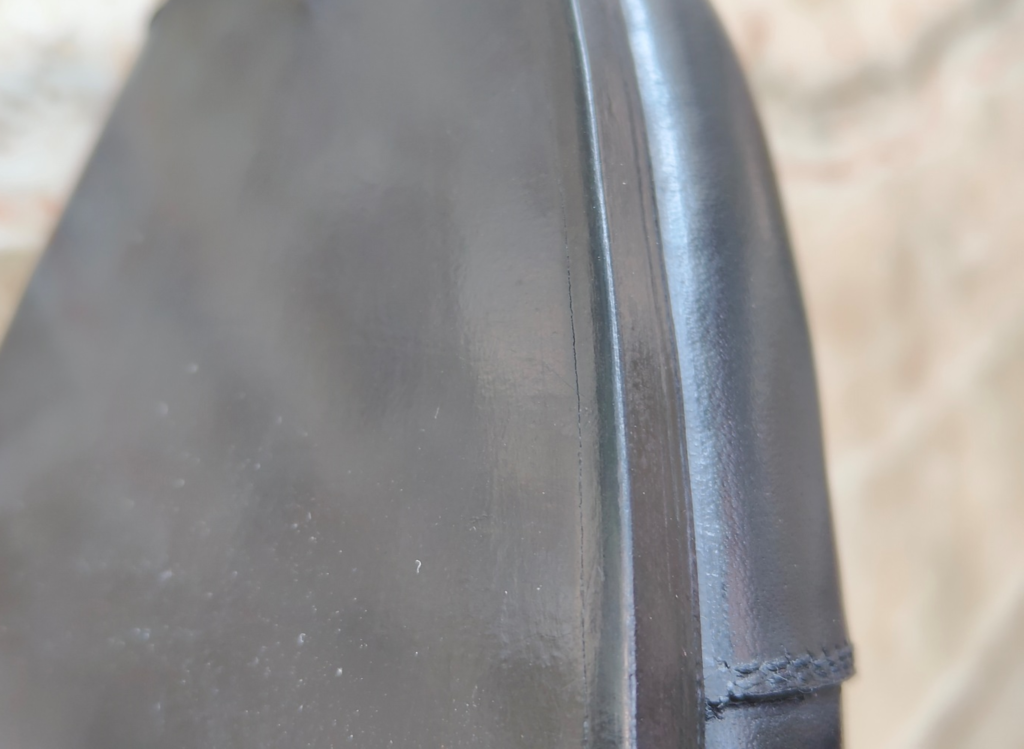
If you look closely, you can see the stitching grooves covered back from both sides.
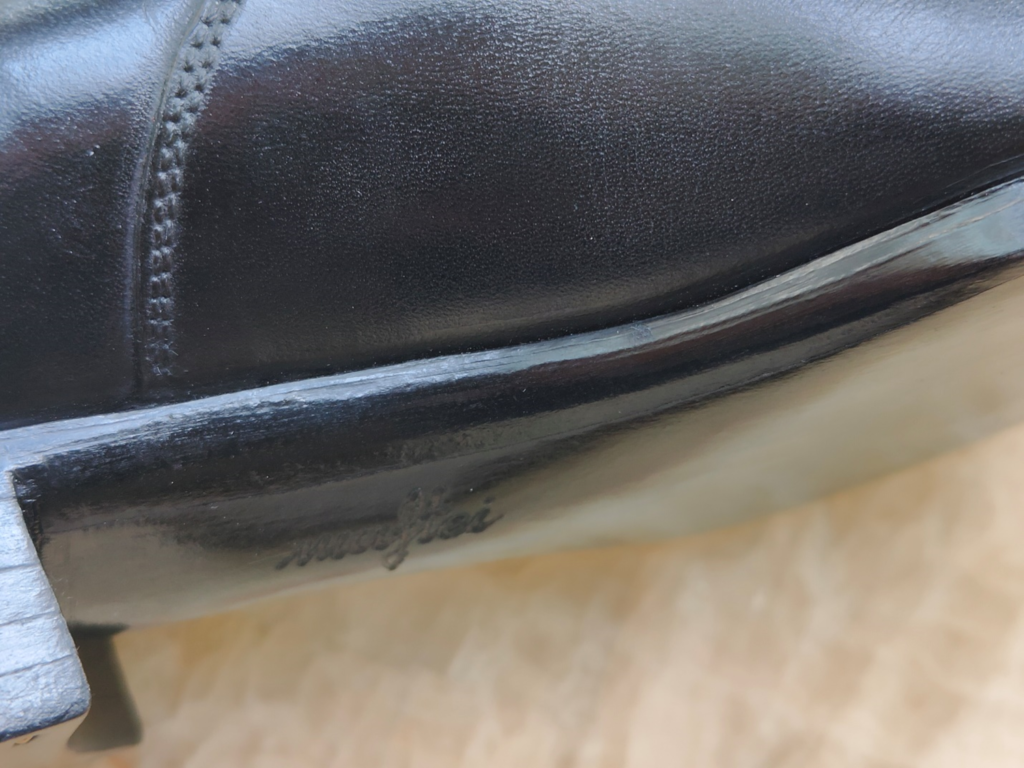
The blind waist, which is an element that can be seen on many shoes, is an aesthetic feature that I admire very much. The implementation method is to use a blunt tool after sewing, “roll” the welt and the sole upwards, and hide the stitches after the edge is completely attached to the upper.
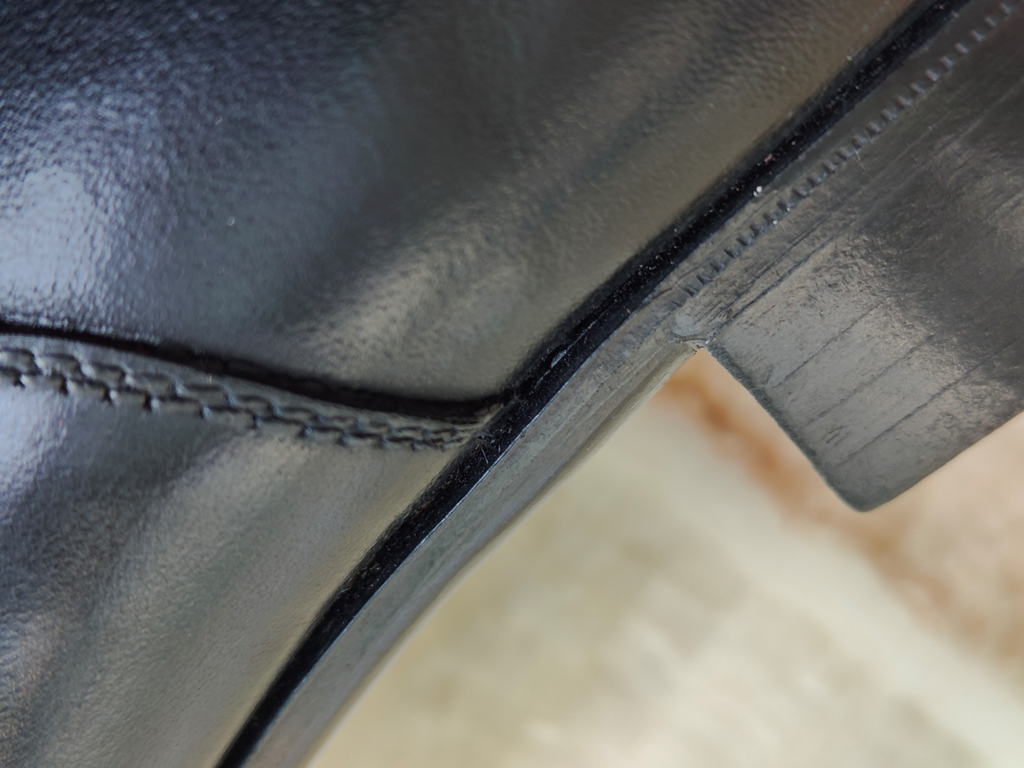
This is the outside of the waist. On traditional European bespoke shoes, the outer waist is less grinded than the inner, which is for the overall sense of harmony. When I looked closely, I could see the stitching, but the stitching was so close to the upper.
I know how to achieve blind stitching at waist, but I can’t figure out the forefoot.

The dividing line between welt and outsole is obvious, and there seems to be no stitches on the welt?
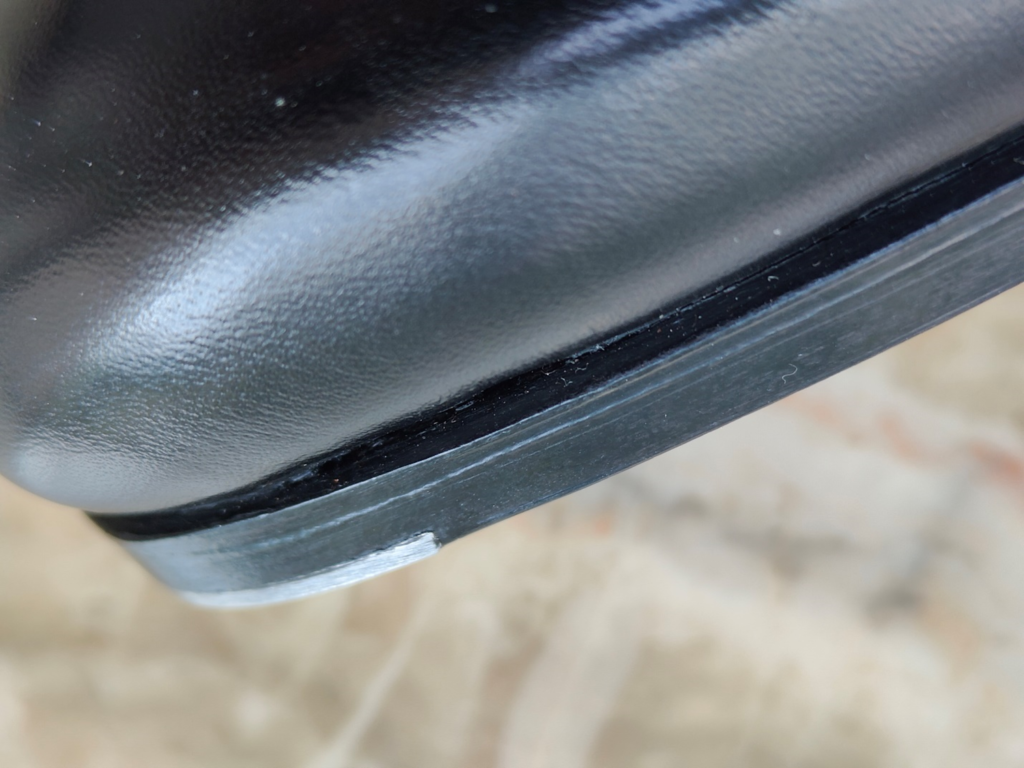
I searched all angles to take pictures, and finally here, I caught the stitches. They are really close to the upper, and you can even say that those ran under the upper.
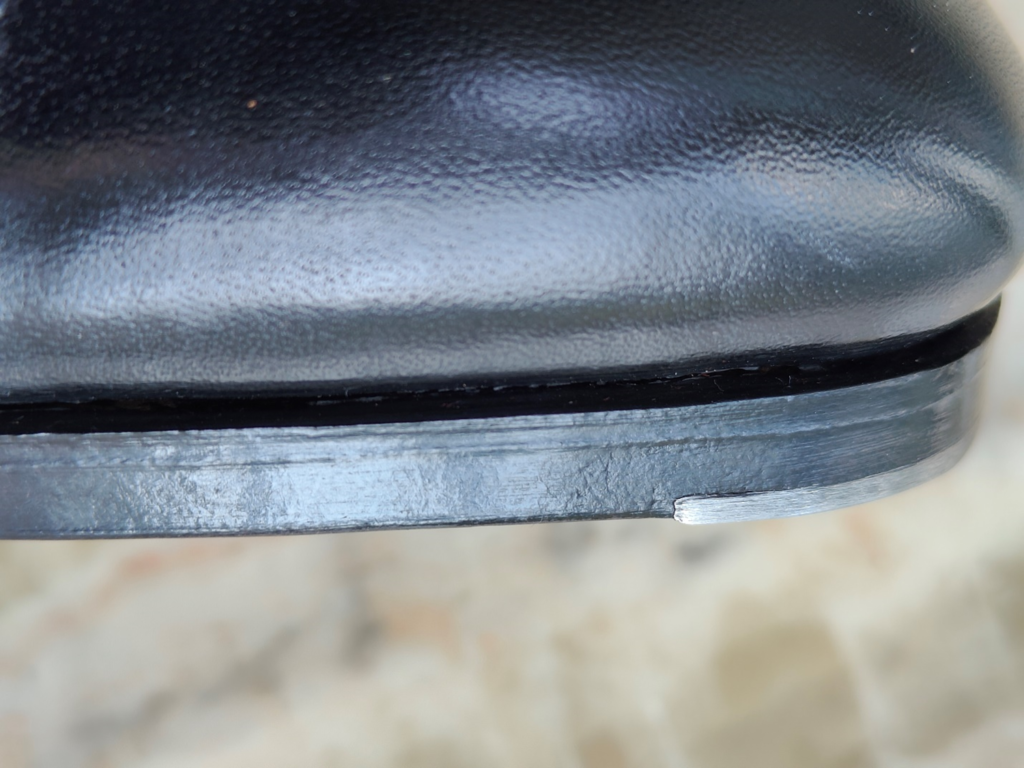
I guess that the welt was originally wider, and thinner. After stitching, the welt was folded back and then covered the stitches? This is entirely my conjecture.
Seamless lining
I’m sure this is definitely the first time you’ve heard of it, and it’s the first time I’ve mentioned it. But from the first time I ordered shoes to Maftei, the Mr. Maftei wrote this in the configuration.
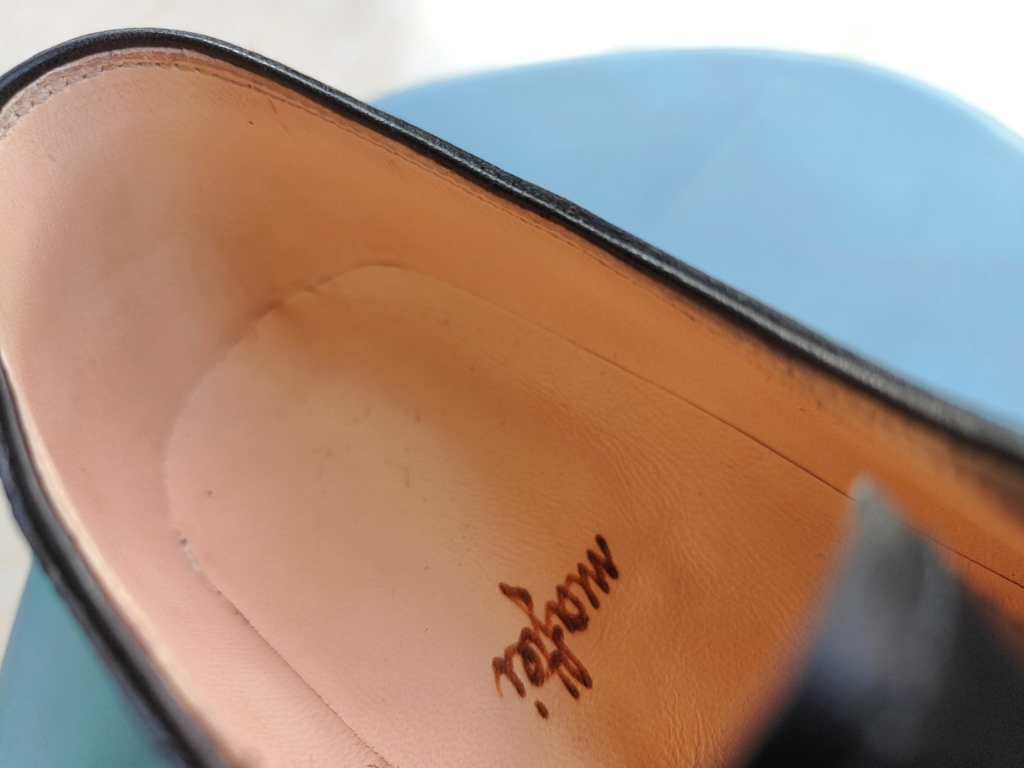
Seamless lining could be something Maftei himself is proud of. It’s just that where the difficulty is, I can’t really think of it.
From a functional and aesthetic point of view, it seems that there is no significant improvement.
Of course, a craft, when the person who makes it is proud of, and some connoisseurs like to have, it is enough.
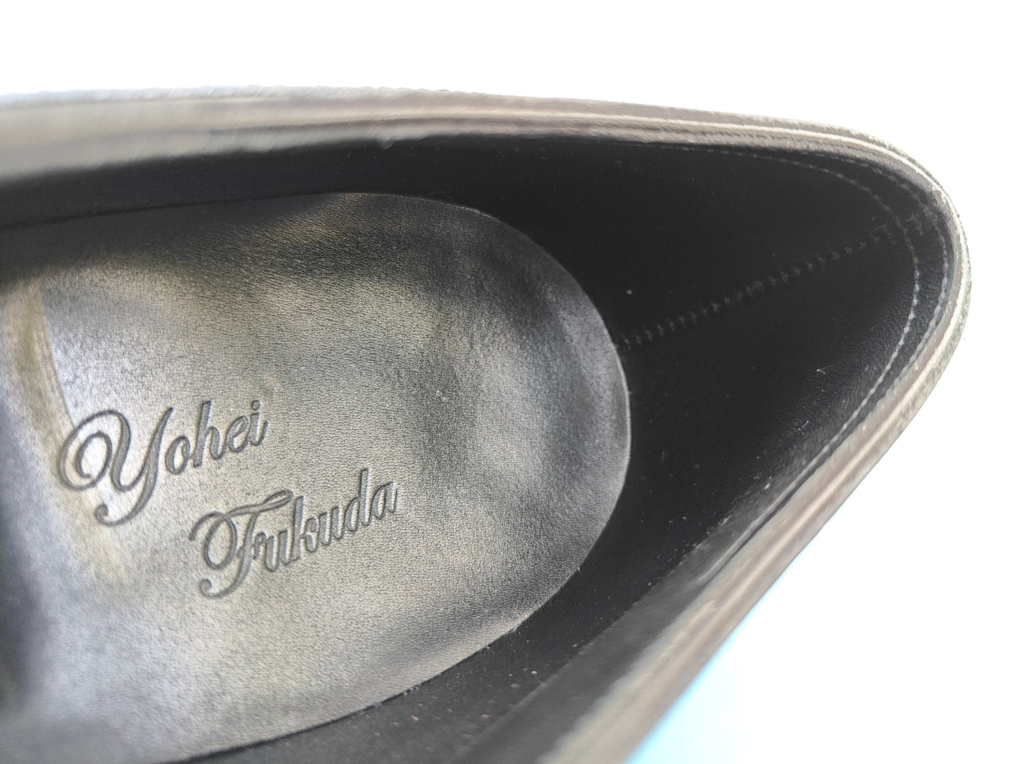
This is the seam on a pair of Yohei Fukuda.

Edward Green has a unique one.
But none of them has seamless lining, and I don’t know anyone except Maftei.
Summar
It is these two new process I would like to introduce.
Next, let’s take a look at Maftei’s product details.
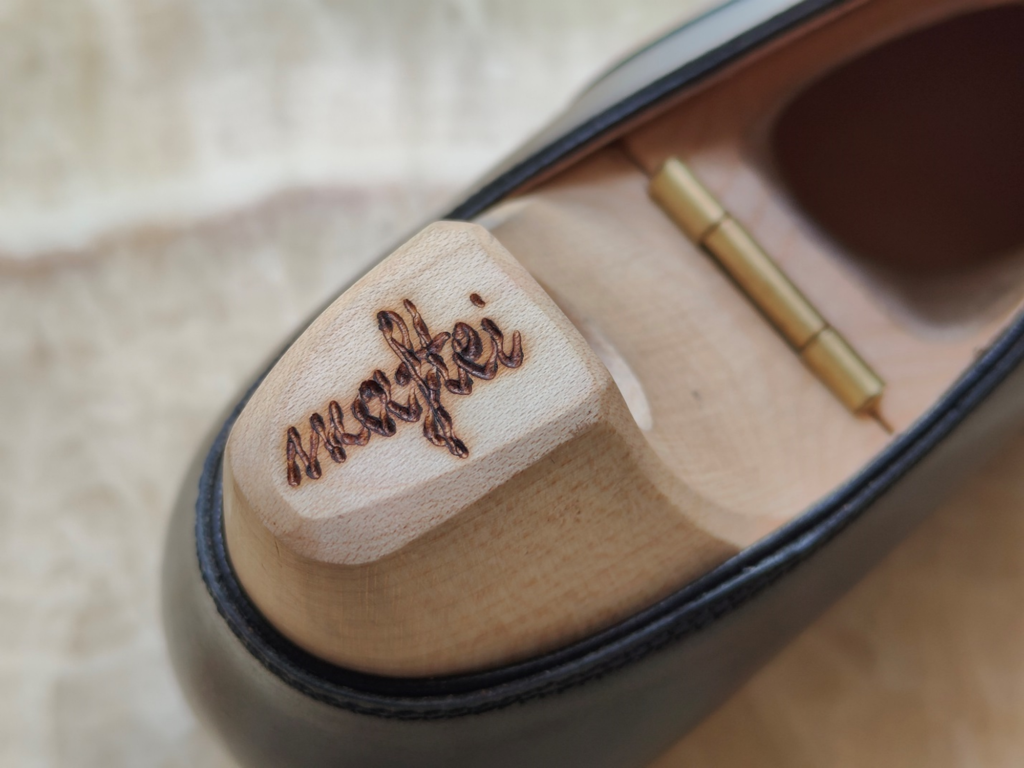
Handmade branded lasted shoe tree。
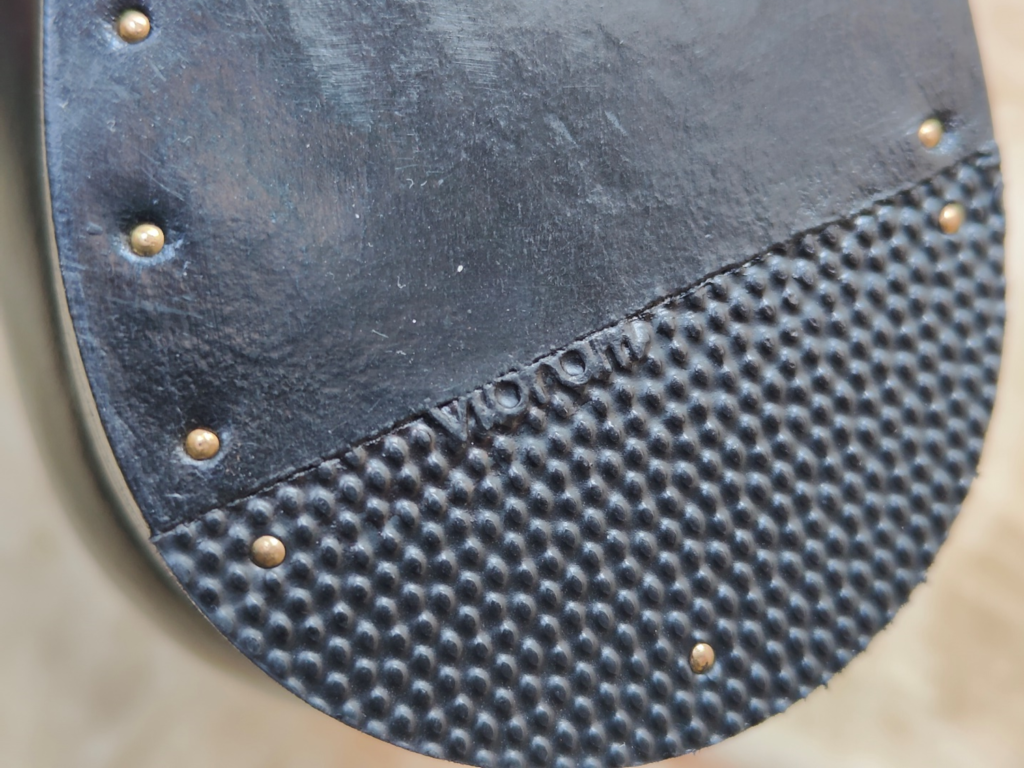
The heel is completely handmade, not only is that the heel is stacked by layers of leather, but the rubber is a piece of Vibram cut by himself.

Extremely fine knurling on heel.
